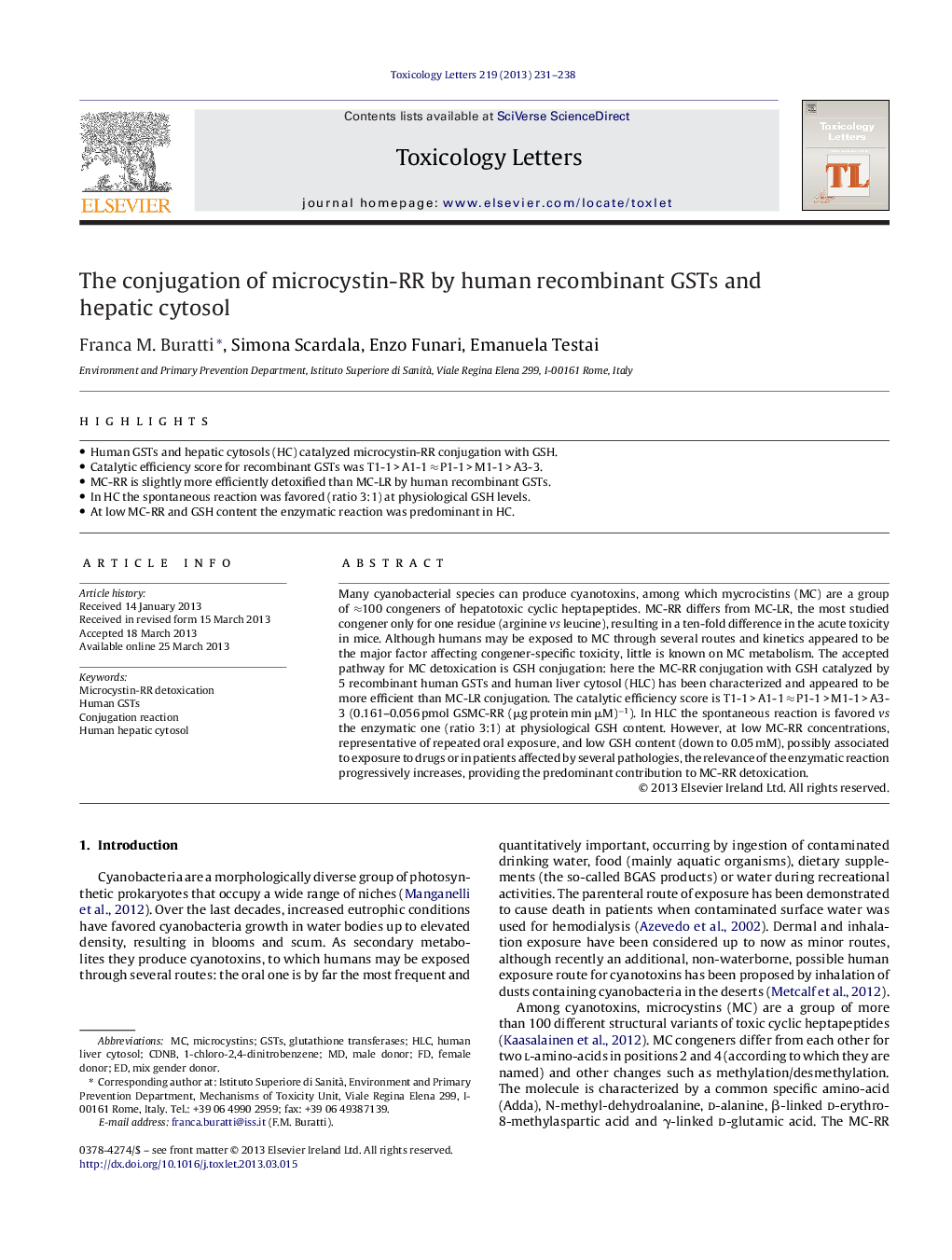| Article ID | Journal | Published Year | Pages | File Type |
|---|---|---|---|---|
| 5860611 | Toxicology Letters | 2013 | 8 Pages |
Abstract
Many cyanobacterial species can produce cyanotoxins, among which mycrocistins (MC) are a group of â100 congeners of hepatotoxic cyclic heptapeptides. MC-RR differs from MC-LR, the most studied congener only for one residue (arginine vs leucine), resulting in a ten-fold difference in the acute toxicity in mice. Although humans may be exposed to MC through several routes and kinetics appeared to be the major factor affecting congener-specific toxicity, little is known on MC metabolism. The accepted pathway for MC detoxication is GSH conjugation: here the MC-RR conjugation with GSH catalyzed by 5 recombinant human GSTs and human liver cytosol (HLC) has been characterized and appeared to be more efficient than MC-LR conjugation. The catalytic efficiency score is T1-1 > A1-1 â P1-1 > M1-1 > A3-3 (0.161-0.056 pmol GSMC-RR (μg protein min μM)â1). In HLC the spontaneous reaction is favored vs the enzymatic one (ratio 3:1) at physiological GSH content. However, at low MC-RR concentrations, representative of repeated oral exposure, and low GSH content (down to 0.05 mM), possibly associated to exposure to drugs or in patients affected by several pathologies, the relevance of the enzymatic reaction progressively increases, providing the predominant contribution to MC-RR detoxication.
Keywords
Related Topics
Life Sciences
Environmental Science
Health, Toxicology and Mutagenesis
Authors
Franca M. Buratti, Simona Scardala, Enzo Funari, Emanuela Testai,
